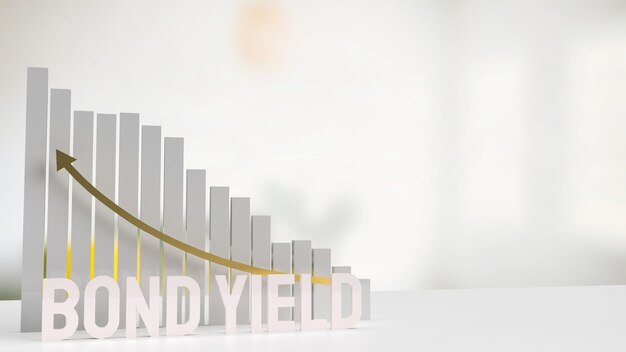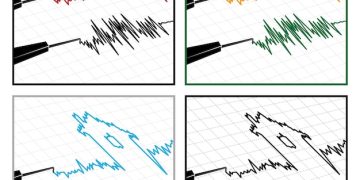High-Yield Investing: Are Corporate Bond ETFs Right For You?

High-yield corporate bond ETFs offer potentially attractive returns, but their suitability depends on your risk tolerance, investment goals, and understanding of the current market conditions.
Are you searching for higher returns in a low-yield environment? High-yield investing: Are corporate bond ETFs right for your portfolio in the current market? may seem attractive. But before diving in, it’s crucial to understand the risks and rewards associated with these investment vehicles.
Understanding High-Yield Corporate Bonds
High-yield corporate bonds, often referred to as “junk bonds,” are debt securities issued by companies with lower credit ratings. These companies are considered to have a higher risk of default, meaning they might not be able to repay their debts.
What Makes Them High-Yield?
To compensate investors for the increased risk, these bonds offer higher interest rates than investment-grade bonds. The difference in yield is known as the “credit spread,” which reflects the perceived riskiness of the issuer.
Risks and Rewards
Investing in high-yield corporate bonds presents both opportunities and challenges. On the one hand, the higher yields can boost your portfolio’s returns. On the other hand, the risk of default can lead to significant losses.

What are Corporate Bond ETFs?
Corporate bond ETFs (Exchange Traded Funds) are investment funds that hold a basket of corporate bonds. They offer investors a convenient way to diversify their bond holdings and gain exposure to a broad range of issuers.
Corporate bond ETFs are typically passively managed, meaning they track a specific bond index. This approach aims to replicate the performance of the index, rather than trying to outperform it.
Benefits of Investing in Corporate Bond ETFs
- Liquidity: ETFs can be bought and sold on stock exchanges, making them highly liquid.
- Diversification: ETFs provide exposure to a wide range of corporate bonds, reducing risk.
- Transparency: ETF holdings are typically disclosed daily, allowing investors to see what they own.
- Low Cost: ETFs generally have lower expense ratios than actively managed bond funds.
Corporate bond ETFs can provide investors with a diversified and liquid way to access the corporate bond market. The transparency and low cost of ETFs make them an attractive option for many investors.
High-Yield Corporate Bond ETFs: A Closer Look
High-yield corporate bond ETFs focus specifically on bonds with lower credit ratings. These ETFs aim to provide investors with a higher income stream than investment-grade bond ETFs.
How They Work
High-yield corporate bond ETFs typically track an index of high-yield bonds. The index provider sets the criteria for inclusion, such as credit rating, maturity, and liquidity. The ETF then invests in bonds that meet these criteria.
Factors Affecting Performance
The performance of high-yield corporate bond ETFs is influenced by several factors, including:
- Economic Growth: Strong economic growth generally supports high-yield bond prices.
- Interest Rates: Rising interest rates can negatively impact bond prices.
- Credit Spreads: Widening credit spreads reflect increased risk aversion and can lower bond prices.
- Default Rates: Higher default rates can lead to losses for bondholders.
Therefore, understanding these factors is crucial for evaluating the risk and potential return of high-yield corporate bond ETFs.

Assessing Your Risk Tolerance
Before investing in high-yield corporate bond ETFs, it’s essential to assess your risk tolerance. This involves understanding your investment goals, time horizon, and ability to withstand potential losses.
Understanding Your Investment Goals
What are you hoping to achieve with your investments? Are you saving for retirement, a down payment on a house, or another long-term goal? Your investment goals will influence the types of investments that are appropriate for you.
Evaluating Your Time Horizon
How long do you have until you need the money? A longer time horizon allows you to take on more risk, as you have more time to recover from potential losses.
Considering Your Ability to Withstand Losses
How would you react to a significant decline in your portfolio’s value? If you would panic and sell your investments, you may not be comfortable with the volatility of high-yield corporate bond ETFs.
Carefully assessing your risk tolerance is vital to ensuring that high-yield corporate bond ETFs align with your financial situation and comfort level.
Analyzing the Current Market Conditions
The current market environment plays a significant role in the attractiveness of high-yield corporate bond ETFs. Factors such as interest rates, economic growth, and credit spreads can all impact their performance.
Interest Rate Environment
Are interest rates rising, falling, or stable? Rising interest rates can put downward pressure on bond prices, while falling rates can provide a boost. Understanding the direction of interest rates is essential for making informed investment decisions.
Economic Outlook
Is the economy growing strongly, experiencing a recession, or somewhere in between? Strong economic growth typically supports high-yield bond prices, while recessions can lead to increased defaults and lower prices.
Credit Spread Trends
Are credit spreads widening, narrowing, or stable? Widening credit spreads indicate increased risk aversion and can negatively impact high-yield bond ETFs. Narrowing spreads suggest improving investor sentiment and can boost prices.
Analyzing these market conditions helps investors to make more informed decisions when considering high-yield corporate bond ETFs for their portfolios.
Alternatives to High-Yield Corporate Bond ETFs
While high-yield corporate bond ETFs can be a valuable tool for generating income, they are not the only option. There are several alternative investments that you might consider.
Investment-Grade Bond ETFs
These ETFs invest in bonds with higher credit ratings, offering lower yields but also lower risk. They can be a good choice for investors who prioritize capital preservation over maximizing returns.
Dividend-Paying Stocks
Dividend stocks can provide a steady stream of income and potential capital appreciation. However, stock prices can be more volatile than bond prices.
Real Estate Investment Trusts (REITs)
REITs invest in real estate and distribute their income to shareholders. They can provide a combination of income and capital appreciation, but they are also subject to the risks of the real estate market.
Depending on your risk tolerance and investment objectives, these alternatives might be better suited for your portfolio than high-yield corporate bond ETFs.
| Key Point | Brief Description |
|---|---|
| ⚠️ Risk Assessment | Evaluate your risk tolerance before investing. |
| 📈 Market Analysis | Analyze interest rates and economic conditions. |
| 💼 Diversification | ETFs offer exposure to a range of bonds. |
| alternatives | Consider other options like investment-grade bonds. |
FAQ
▼
The primary risks include default risk (the issuer can’t repay), interest rate risk (rising rates decrease bond value), and credit spread risk (widening spreads indicate higher risk aversion).
▼
Consider your investment goals, time horizon, and ability to withstand losses. If you’d panic sell during a downturn, high-yield ETFs may not be suitable.
▼
Keep an eye on interest rate trends, economic growth indicators, and credit spread movements. These factors can significantly impact the performance of high-yield ETFs.
▼
They can be, but only if they align with your risk tolerance and time horizon. Younger investors with longer horizons may be more comfortable than retirees seeking stability.
▼
Consider investment-grade bond ETFs, dividend-paying stocks, or REITs. These offer varying levels of risk and return depending on your individual needs and preferences.
Conclusion
In conclusion, deciding whether high-yield investing: Are corporate bond ETFs right for your portfolio in the current market? hinges on a clear understanding of their risks and benefits, your personal risk tolerance, and a careful analysis of prevailing market conditions. While they offer the potential for higher income, it’s crucial to weigh them against safer alternatives and ensure they align with your overall investment strategy.





